I’m often asked by investors whether apartments perform well. History has certainly shown that some don’t. Melbourne has been quite saturated with new apartments, particularly in locations such as South Yarra, Docklands, Footscray and Brunswick, (to name a few).
During the ten year period from 2012 to 2022, apartment growth was subdued in Melbourne, but recent sales results suggest that apartments in established, boutique blocks are appreciating in value.
Established and boutique, older style apartments remain our preferred picks. The reason for this is eight-fold;
- These types of blocks are generally located in residential zones, in quieter streets, and with a blend of housing types surrounding them,
- They usually have an accessory car space attached to their title,
- They are generally solidly built, and often double brick,
- The room sizes are generous,
- The strata fees are lower than high rise due to simpler ongoing maintenance, (i.e. no lifts, no gyms/pools, no need for high rise window cleaners, etc)
- The land to asset ratio is much higher than modern, high rise options,
- The owner’s ability to be an active strata member is usually easier based on a lower number of personalities and opinions.
I’ve hand picked three apartments that have recently sold which have multiple historical sales I’ve charted. They all have something in common; each are 1970’s builds, all are two bedroom dwellings, and all are boutique brick blocks in pleasant, leafy streets.
Below is a nicely presented apartment in Byron Street, Elwood. The kitchen and bathroom renovations aren’t particularly recent, although some cosmetic updates such as tiles and paint have given the interior a lovely, modern feel.
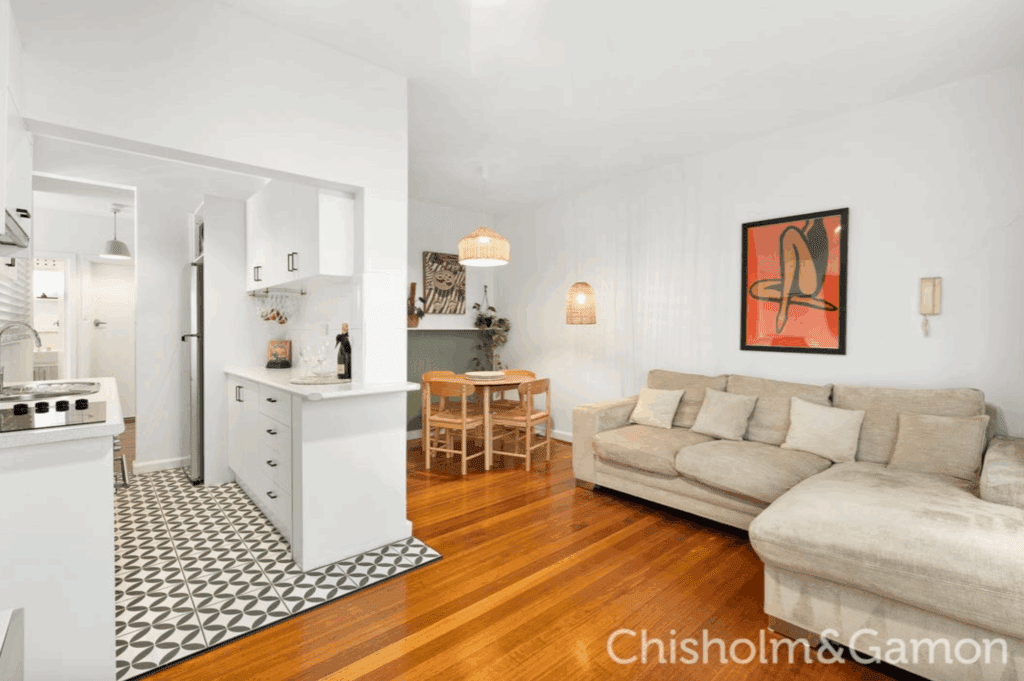
The performance of this unit over the years illustrates the flatter period between 2012-2022, but the line of best fit shows an average capital growth rate of 5.9% pa. As superb as Elwood is as a locale, it could be argued that this is an underperformance when contrasted to apartments in other parts of Melbourne. Elwood has a few complexities, including a disproportionately high over-representation of units vs houses, and a history of brick subsidence for blocks that are impacted by softer soil and water-related overlays. Elwood Canal is a man-made watercourse connecting the lower reaches of the Elster Creek with Port Phillip Bay, but it was once upon a time, a swamp. (Source: here)
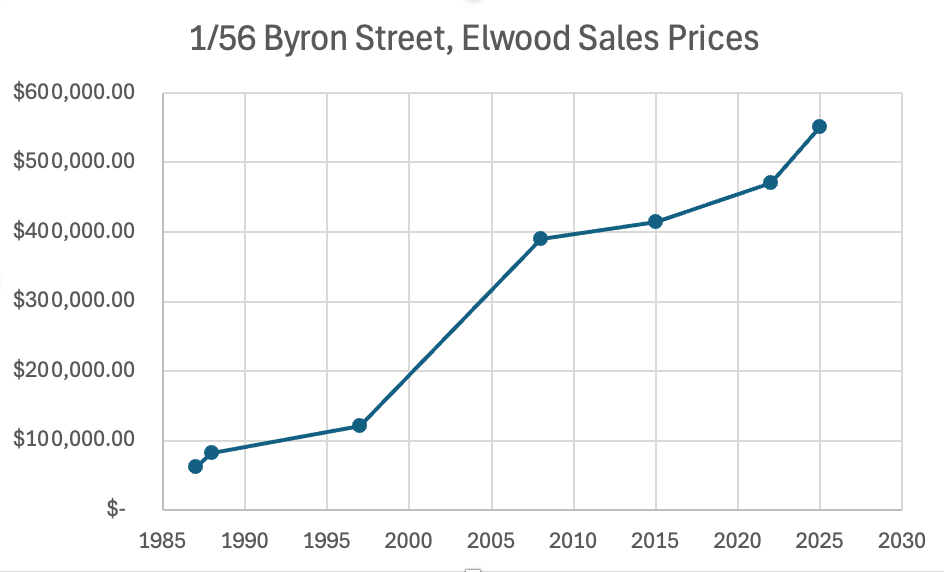
The next set of sales data I plotted was for this light-filled boutique block in Mentone. I’m particularly familiar with this one because my ownership tenures is one of the data points. I loved this apartment and I enjoyed the beach walks and the short dash to the shops and station.
I’ve often wondered if I should have held the property, but I recall making the decision to invest in regional houses, (as opposed to capital city units). The historical performance suggests that I could have enjoyed some reasonable returns had I held onto my unit.
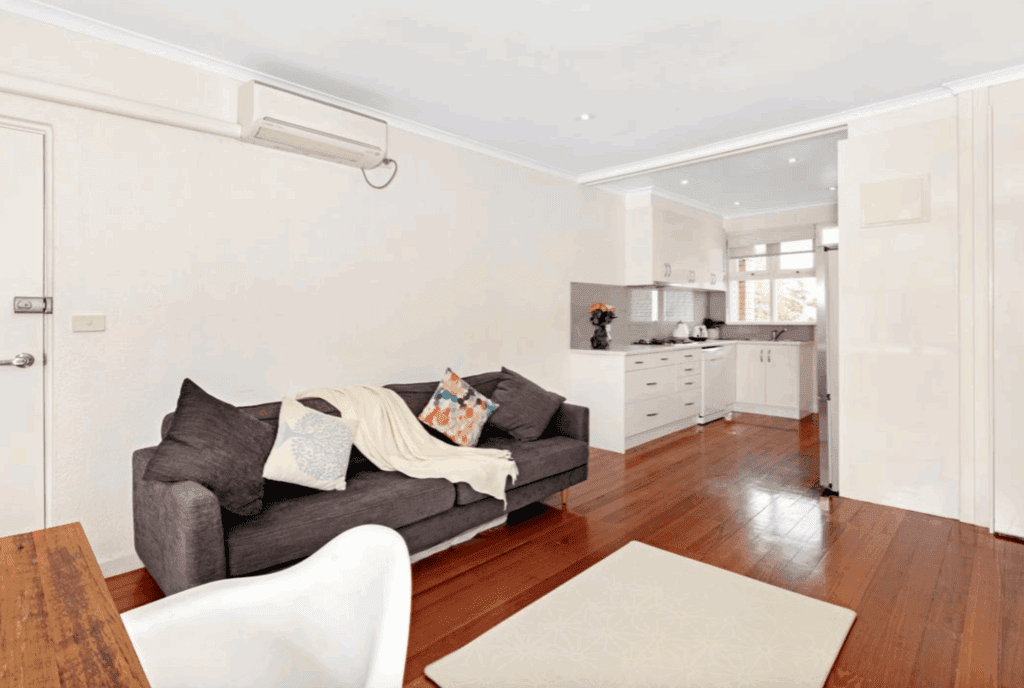
The line of best fit shows that my old unit delivered an average growth rate of 6.5% pa. Combined with a 3.5% gross rental return, my total return eclipsed 10% pa. While some properties perform at higher levels, the associated maintenance and running costs of my little flat were reasonably low.
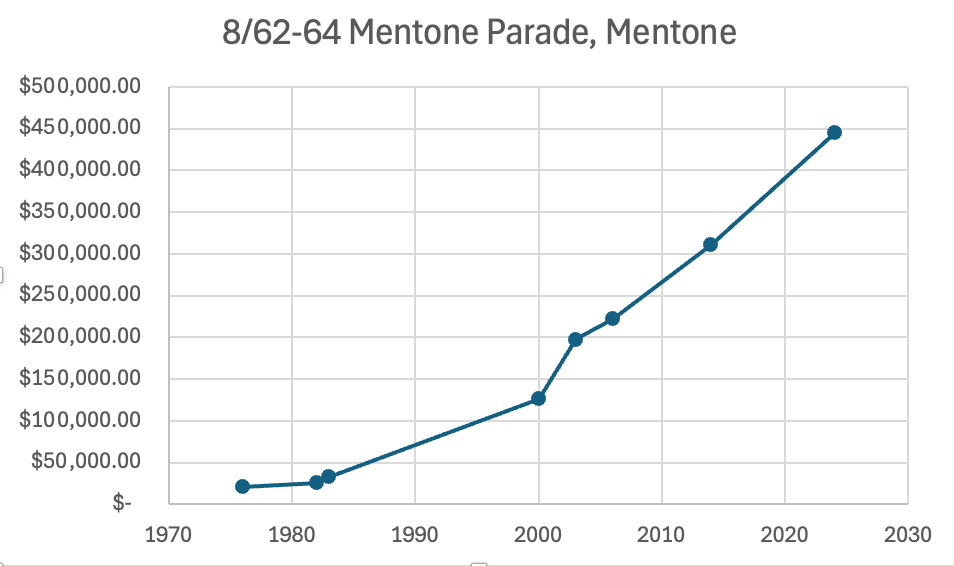
Pivoting to the leafy south-eastern suburb of Malvern East, this glorious apartment below eclipsed the growth of both Mentone and Elwood. However, I note that it has two advantages. Firstly, the courtyard holds a drawcard. Despite the fact that it is likely not on title, any formal arrangement or leasehold in place gives the owner an added and rare bonus. Secondly, the internal layout of the unit has been enhanced with the removal of kitchen/dining walls and the inclusion of a kitchen and bathroom remodel.

The owners who completed these works would have spent around $100,000 in 2019, hence the dramatic jump on the chart. Modelling this injection of capital takes the 7% pa average annual growth rate down to a figure closer to the other two.
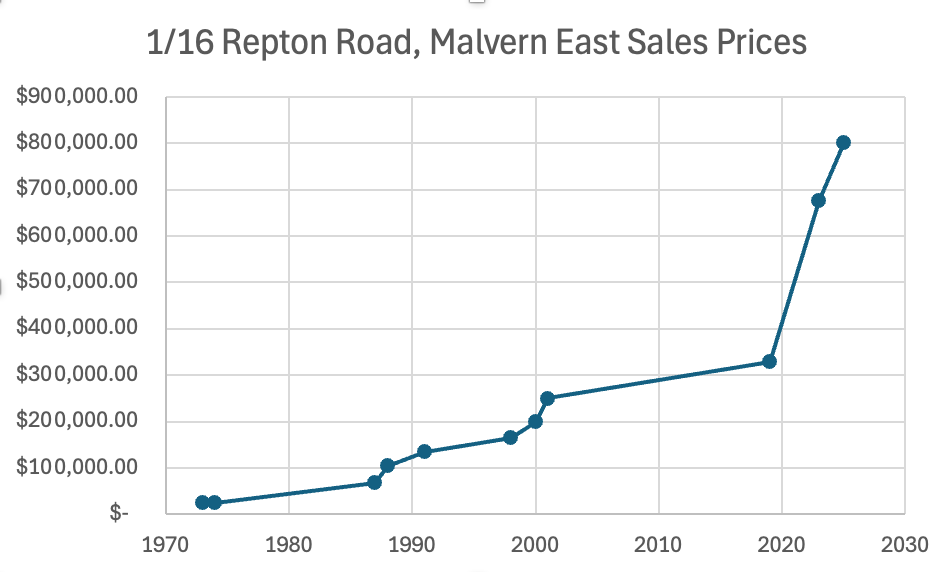
Segmenting villa units and apartments is an interesting exercise though. Villa units represent varying dwelling types around the country, but Victorian villas are brick and tile units with land on title. Unlike an apartment, the owner can claim ownership of a specific piece of land, and an equal share of the associated common area, (for example, driveway and any common garden areas).
This delightful villa unit below is located in Melbourne’s northern suburb of Coburg. Arguably situated in one of Coburg’s best streets, this property recently sold for just shy of $800,000. The kitchen and bathroom have been updated over the years, but the dwelling wasn’t specifically renovated for the most recent sale.
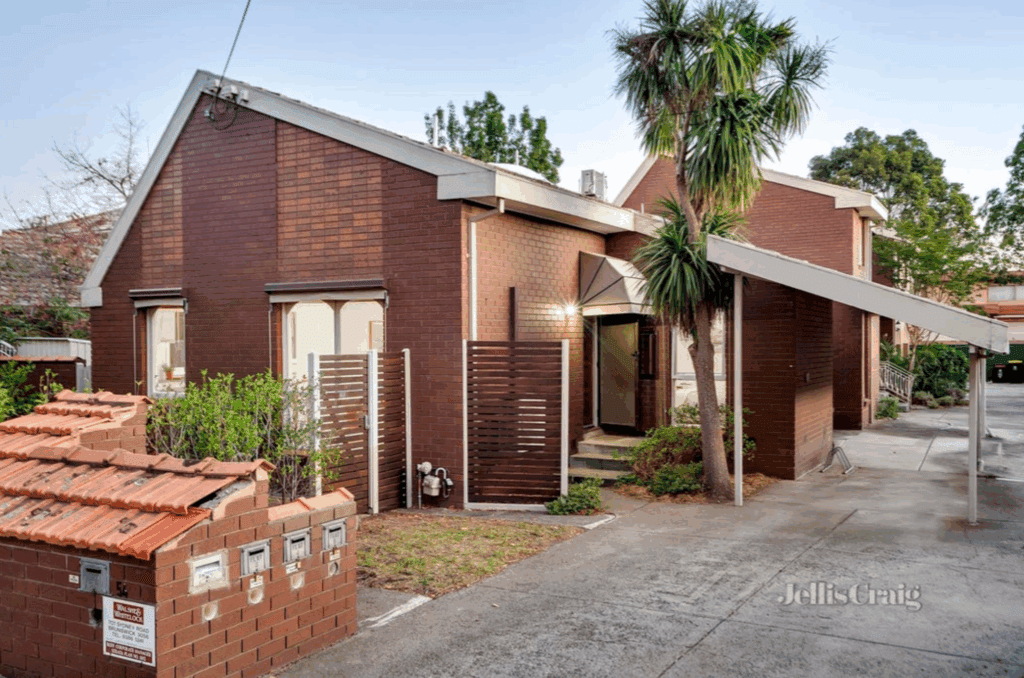
The line of best fit shows that this unit has delivered an average annual growth rate of 7.4% pa. When gross rental yield is overlaid, total returns exceed 11%. By any measure this is considered a good return for an investor.
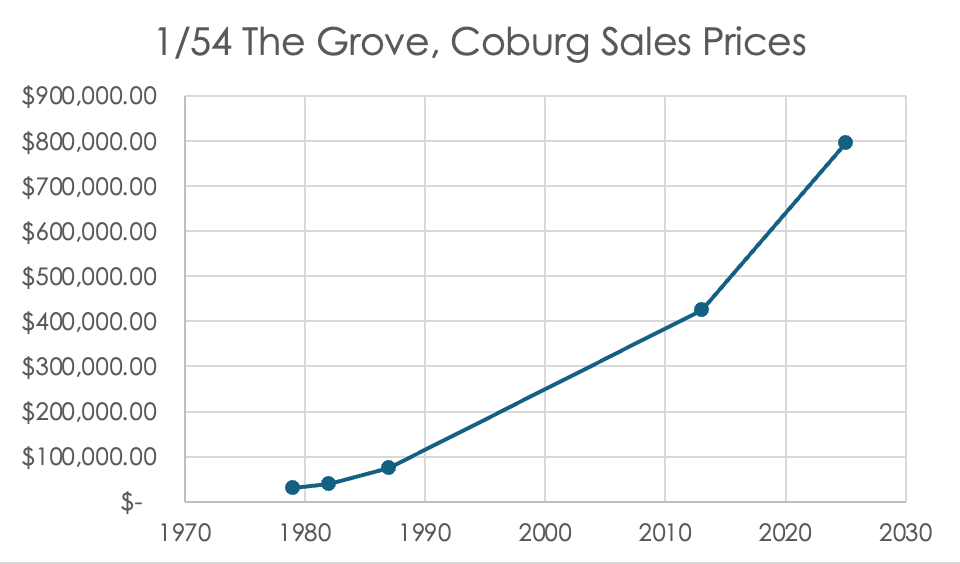
Melburnians generally like dwellings with land content. Unlike many other cities, our appetite for apartment living isn’t mainstream. This could change in years to come, particularly when we consider urban development, transport upgrades and buyer’s changing needs.
When it comes to apartments, it’s the extra ‘x-factor’ attributes that can make all the difference. Whether it be generous living areas, north facing balconies, courtyards on leasehold or superb vistas, an apartment needs to have that special-something to deliver outperformance returns.
REGISTER TO OUR NEWSLETTER
INFORMATION
CONTACT US
1A/58 ANDERSON STREET,
YARRAVILLE VIC 3013
0422 638 362
03 7000 6026
CATE@CATEBAKOS.COM.AU
